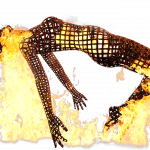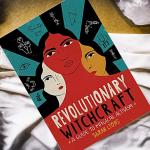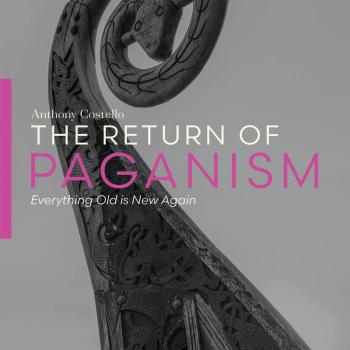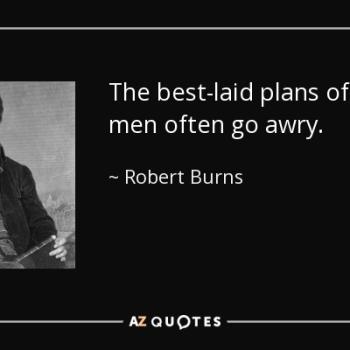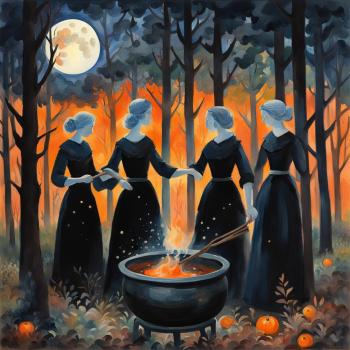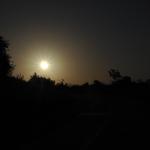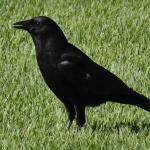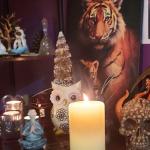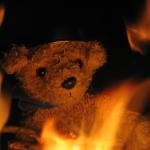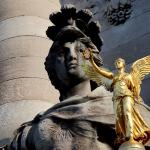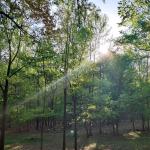Lughnasadh is a holiday that I think is vastly overlooked by the majority of people in the Pagan community. I would have to admit that even I have been guilty of overlooking this holiday until fairly recently in my practice. However, this is one of those gems in our modern practice that has actual ties with ancient civilizations. I’ve become like Alice peering through the looking glass and have fallen down the rabbit hole of information surrounding this holiday.
If you haven’t paid attention to Lughnasadh or Lammas, one could entirely forgive you. I want to invite you to peer into the past and look at some outstanding traditions that are marked by this holiday. I would also encourage you to carry on with your own research and see if you find this multifaceted holiday as captivating as I have come to see it. In this article I will go over the three customs and try to squeeze in as much information as I can without turning this into an anthropological journal. At the very end I will also include a ritual that I have designed for this holiday. Please feel free to use this ritual, tweak it to your liking, or just see how one Pagan celebrates the turning of the season.
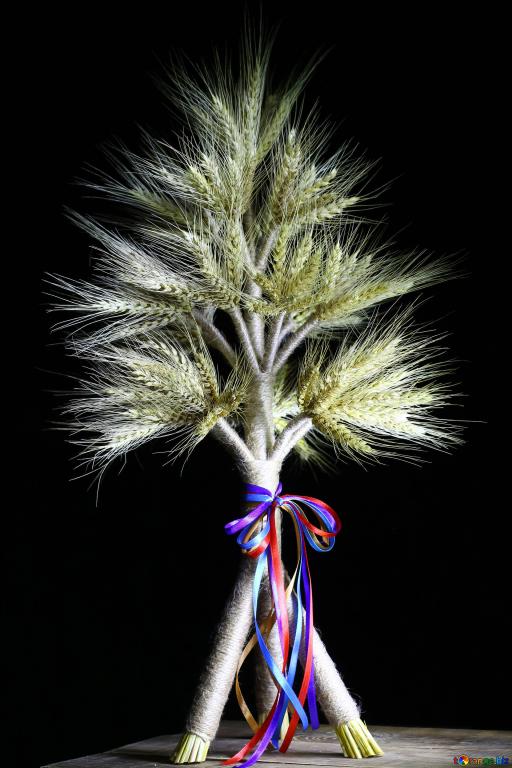
Lammas Day
We are beginning this article out of chronological order by looking at the feast of Lammas Day. If you study Wicca, especially books from the late 1980’s into the early 2000’s, you’re likely to see Lughnasadh referred to as Lammas. This clever appropriation comes from earlier celebrations that marked the first grain festivals in the United Kingdom, Ireland, and parts of Northern France. The holiday did not have a fixed day, initially. This lack of a fixed day was carried over from traditional Pagan practices in the region.
Christians quickly realized that rural areas were continuing the practices celebrating the grain festival and quickly made a remedy. Lammas became affiliated with the feast of St. Peter and loaves of bread were baked using the first grain, distributed by churches, and used on Christian altars. Medieval terminology for ‘loaf-mass’ became Lammas. Regional festivals were held from August 1st through August 15th throughout the Anglo-Saxon kingdoms. Kings of Mercia would celebrate the feast day of St. Oswald and monasteries would tell stories about Norse invaders that dismembered the head and hands in a sacrifice to Odin. Throughout the British Isles you will find adaptations that united society under one God by turning once popular holidays into useful tools.
Just as Christians were able to weave their tapestry, Pagans were able to find the threads of Lammas and begin re-creating their holidays. The modern myths about the dying God that is sacrificed for the harvest fit perfectly within the celebrations of the grain. Modern Paganism can find several ways to mark this holiday and several branches of Paganism do! Whether you are celebrating Lammas with dried grains and sheaves of wheat or corn dollies and sickles, this holiday undoubtedly deserves a spot on our calendars.
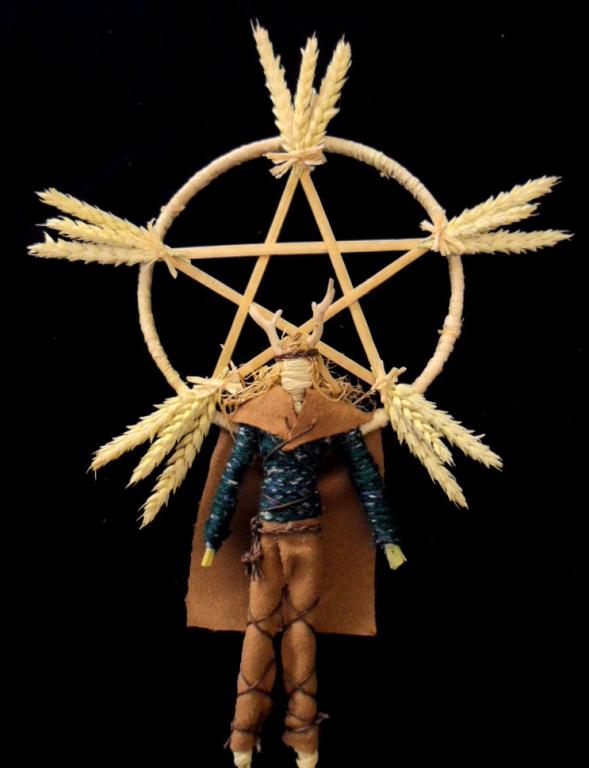
Lughnasadh/Lughnasa
Lugh Lámhfhada – The sun God Lugh is the centerpiece of great importance in this prehistoric celebration. Though we do not have solid details surrounding the festival, we do have quite a bit of information that paints a picture for us. In early Irish literature Lugh was once a High King of Ireland and a fierce warrior of the Tuatha Dé Danann. In some Irish myths Lugh’s foster mother, Tailtiu died after clearing the plains of Ireland for the people to farm. She was said to be buried under a mound in County Meath, Ireland. To honor his foster-mother, Lugh held the first Óenach, and brought together all of the kings of Ireland.
Gathering all of the great leaders and Kings was no small feat and they each were held under a truce. The truce was used to settle disputes between each leader and honor Tailtiu with the first harvest (breaking bread anyone?). We do not have evidence of a great God clearing the land but we do have history of Ireland’s Óenach – gatherings. The first is debated but said to be around the Neolithic period and the last was held around the time of the Norman invasions. Each gathering consisted of leaders finding ways to work out their disputes, unite on efforts, and eventually it included festivities for the people of Ireland.
Festivities included feasts from newly harvested crops, making community bread, matchmaking, markets, and most notably the Tailteann games! These games would have displayed wrestling, spear throwing in honor of Lugh, running, and high jump. Since this festival celebrates all things Lugh, it would have included storytelling, philosophy, and goldsmith work. Lugh was known as the God of many skills and his festival was a way to showcase those attributes amongst the people of Ireland.
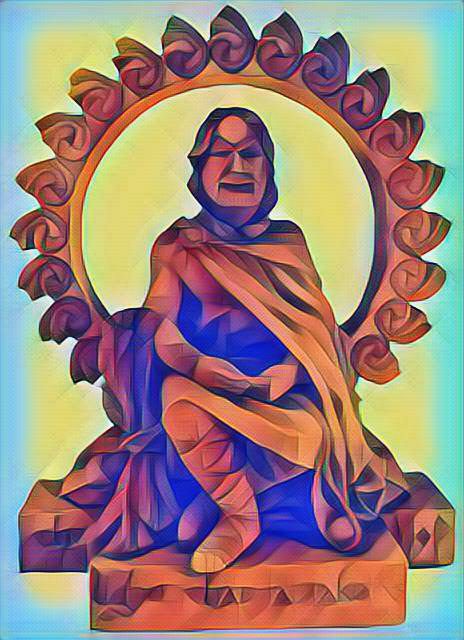
Modern Practices
Modern celebrations are still occurring in Ireland. There is the Auld Lammas Fair in county Antrim, celebrations around the Yellow Man, and pilgrimages in County Mayo. Additionally, Pagans from various traditions have now incorporated this cross-quarter holiday into their practice. The central underlying theme of friendship, comradery, and feasting are still central to our modern celebration. Lughnasadh or Lammas are both ways to put aside differences and come together, uniting to make a difference.
In modern times this celebration takes on a new context and continues to evolve. However, what I find interesting about Lughnasadh is that the core aspects of this holiday remain the same. The need to recognize our seasons no longer serves as a way to harvest the grain and prepare for autumn and winter. We, as a society, are technologically beyond worry of starvation (mostly). Yet, it isn’t the need for food that underlines the importance of Lughnasadh. No, it is the need to look at our planet.
We can all acknowledge that our planet is suffering immensely at the hands of our species. Our Pagan calendar / holidays are not fantastical ways for us to play pretend and LARP as if we are ancient Celts. Our holidays serve to remind us that we still rely on the Earth and by observing its seasons we are basically doing a wellness check on the planet. We create time to observe it, come together with friends (and maybe foes), and put aside our petty differences. We create a modern Óenach and take the oath to settle our differences for things that are more important.
Celebrate this Lughnasadh and as you meet in groves, covens, or with kindred; put aside your worries and work to make our planet better. Happy Lughnasadh!
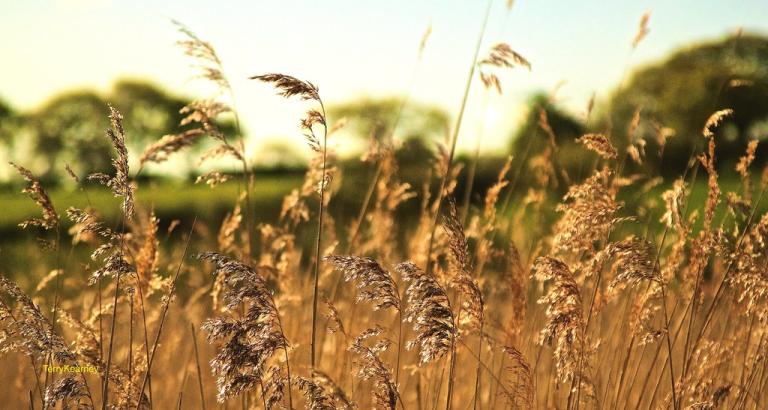
Lughnasadh Ritual – 2021
SET UP:
- Set up the altar outside (weather permitting).
- Have cup of alcohol on the altar – this is for the invocation.
- Set up the altar so the head is in the East and other ritual tools in their corresponding directions.
- Have food, drinks, and offerings ready. They can be on the altar if space is large enough.
- If you’re outside and the space is safe for incense, get a stick ready for each direction.
- Prepare offering bowl with seeds and fruit mixture and place on altar.
- Decide who will do opening, invocations, closing…
PREPARATION:
- Cleanse the space and people with altar incense
OPENING:
- FACING EAST – OPENING LEADER RINGS BELL 3 TIMES
- Opening Leader says: “We come to this place at this time to celebrate Lughnasadh.”
- Opening Leader says: “Guardians of the East, Spirits of Air, we call to you. Come into this circle and share your inspiration. May there be peace in the East.”
- EVERYONE SAYS: “Hail and welcome!”
- Everyone faces South and Leader says: “Guardians of the South, Spirits of Fire, we call to you. Come into this circle and share your passion. May there be peace in the South.”
- EVERYONE SAYS: “Hail and welcome!”
- Everyone faces West and Leader says: “Guardians of the West, Spirits of Water, we call to you. Come into this circle and share your kindness. May there be peace in the West.”
- EVERYONE SAYS: “Hail and welcome!”
- Everyone faces North and Leader says: “Guardians of the North, Spirits of Earth, we call to you. Come into this circle and share your bounty. May there be peace in the North.”
- EVERYONE SAYS: “Hail and welcome!”
- Opening Leader – If you’re able, light and place incense in each direction now as an offering
INVOCATIONS:
- Invocation Leader – Steps to the altar
- Everyone faces East and Invocation Leader says: “Spirits of the land and spirts of this place, we call to you. Join us on this Lughnasadh celebration.”
- EVERYONE SAYS: “Hail and welcome!”
- Invocation Leader pours some alcohol onto the ground
- Invocation Leader says: “Ancestors named and unnamed, known and unknown, we call to you. Join us on this Lughnasadh celebration.”
- EVERYONE SAYS: “Hail and welcome!”
- Invocation Leader pours some alcohol onto the ground
- Invocation Leader says: “Great God Lugh, Samildánach (pronounced SAV-il-dthan-ekh), we call to you. Come into this circle and bring us your blessings. Great Lug Lámfhota (pronounced Loo La-vfo-deh) Join us on this Lughnasadh celebration.”
- EVERYONE SAYS: “Hail and welcome!”
- Invocation Leader pours remaining alcohol onto the ground
- Invocation Leader says: “We celebrate the changing of our seasons and ask for peace from the spirits, our ancestors, and the Gods. Bring us your blessings this Lughnasadh. May we experience peace, prosperity, and happiness.”
OFFERINGS:
- Offering Leader stands before the offering bowl and places hands over offerings
- Offering Leader says: “Hail O’ Mighty Lugh, we come to honor you on this day. You who shines upon the Earth, we give thanks to you for your warmth and light. Continue to bring us your blessings and provide us with your warmth.”
- EVERYONE SAYS: “Hail O’ Mighty Lugh!”
- Offering Leader – Rings bell 2 times – gives offerings to the Earth
EISTEDDFOD (pronounced es-teth-fawd):
- Silent meditation for 5 minutes (mindfulness breathing or guided)
- Art is presented (poetry, music, or any artwork) this can be presented to help people do crafts or spell-work and is often helpful in focusing on an intention.
- Spell-work or crafts may be done at this point (if applicable).
FOOD & DRINKS:
- EVERYONE GATHERS AROUND FOOD AND SAYS: “May we never know hunger or thirst. Let us eat and drink on this Lughnasadh celebration.”
- Eating and activities may be done at this point
CLOSING:
- Everyone faces North and Leader says: “Guardians of the North, Spirits of Earth, we thank you for joining us in our circle. We bid you hail and farewell.”
- EVERYONE SAYS: “Hail and farewell!”
- Everyone faces West and Leader says: “Guardians of the West, Spirits of Water, we thank you for joining us in our circle. We bid you hail and farewell.”
- EVERYONE SAYS: “Hail and farewell!”
- Everyone faces South and Leader says: “Guardians of the South, Spirits of Fire, we thank you for joining us in our circle. We bid you hail and farewell.”
- EVERYONE SAYS: “Hail and farewell!”
- Everyone faces East and Leader says: “Guardians of the East, Spirits of Air, we thank you for joining us in our circle. We bid you hail and farewell.”
- EVERYONE SAYS: “Hail and farewell!”
- Closing Leader says: “Spirits of this land and place, we thank you for your presence today. We bid you hail and farewell!”
- EVERYONE SAYS: “Hail and farewell!”
- Closing Leader says: “Ancestors named and unnamed, known and unknown, we thank you for your presence here today. We bid you hail and farewell.”
- EVERYONE SAYS: “Hail and farewell!”
- Closing Leader says: “Great God Lugh, we thank you for your presence here today. We bid you hail and farewell.”
- EVERYONE SAYS: “Hail and farewell!”
- EVERYONE SAYS: “May there be peace, prosperity, and happiness between us now and forever. Hail and farewell!”
- CLOSING LEADER RINGS BELL 3 TIMES



